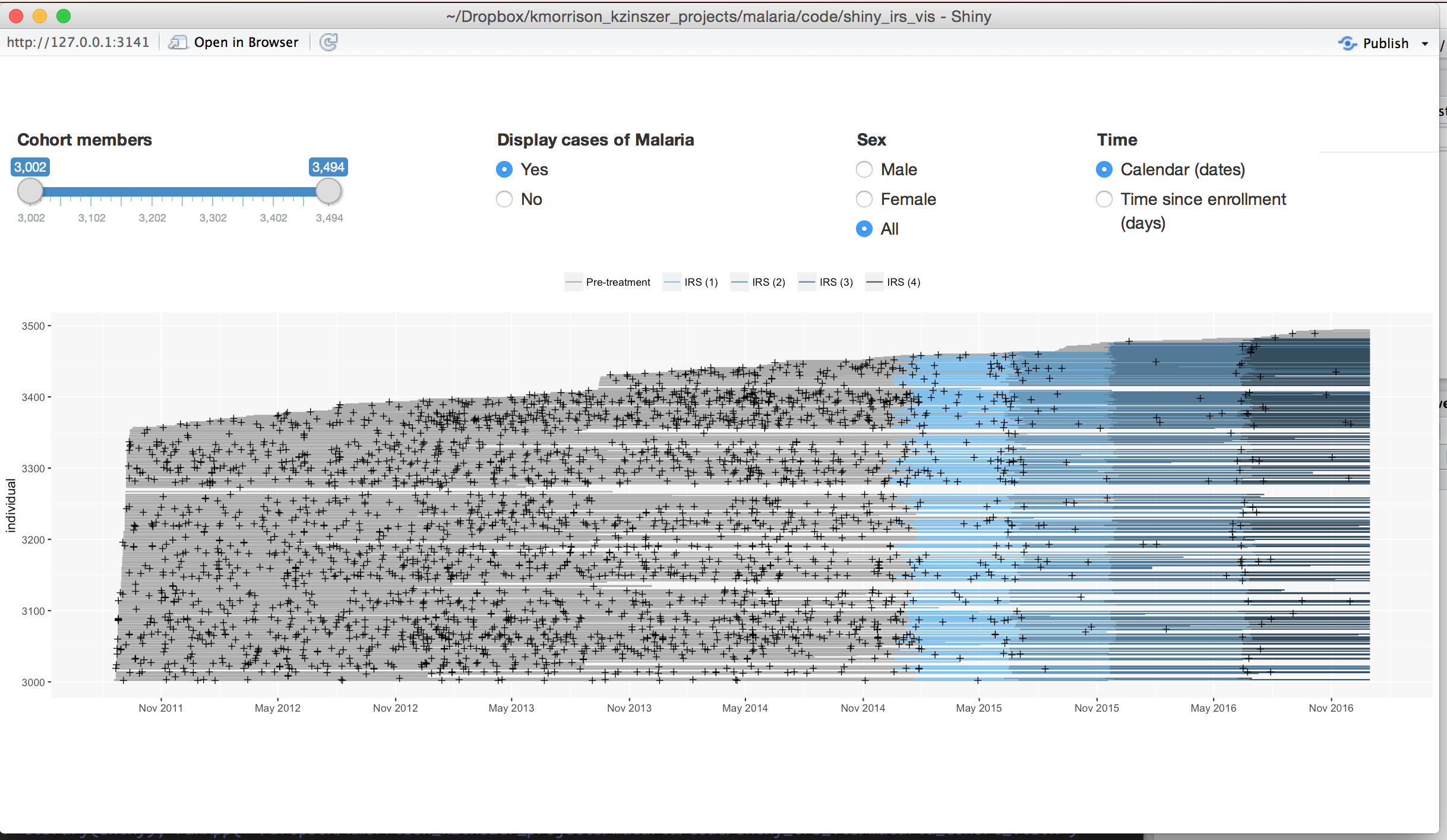Indoor residual spraying for malaria in Uganda
malaria is endemic in many parts of the world. The WHO estimates that in 2015, there were over 200 million cases of malaria and over 400,000 deaths.
For her PhD dissertation, Kate Zinszer worked on malaria surveillance, and continues to study vector-borne disease now that she is an independent researcher. She has studied bed nets1 and now is interested in estimating the length of efficacy of indoor residual spraying as an intervention to reduce malaria transmission. It is believed that the spraying lasts between three and six months, but there is no strong empirical evidence to support this. We have a dataset for a cohort of 370 children from 2011 to 2017 that were regularly monitored for malaria and whose homes were sprayed up to four times during this period.
I am currently working on an interactive shiny app to visualize the distribution of malaria incidence in this cohort over time. The base figure looks like the one below, where each horizontal line represents an individual enrolled in the cohort, spraying status is indicated by colour, and malaria cases are indicated by an x. You can become infected with malaria multiple times. For the sake of this analysis, we considered any malaria diagnoses within two weeks of a previous diagnoses not to be a new case. Even with that definition, some children in this cohort had more than 20 malaria infections during this time.

1 K. Zinszer, J. Stone, J. C. Mpaata, S. Muwanguzi, S. Adler, C. L. McGowan, and P. D. Levy. Success and failure: a firsthand look into Uganda’s most recent bednet distribution campaign. The Lancet Infectious Diseases, 17(3):251–253, 2017.
